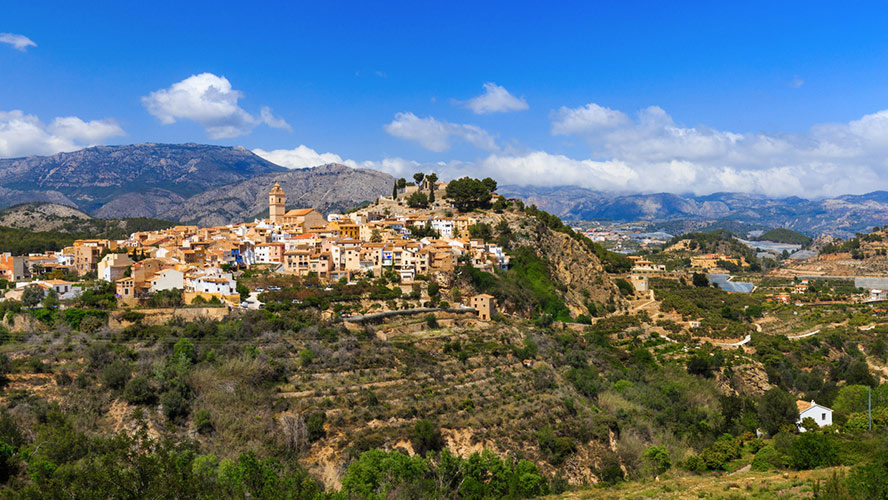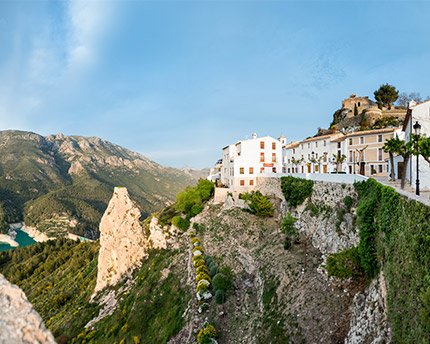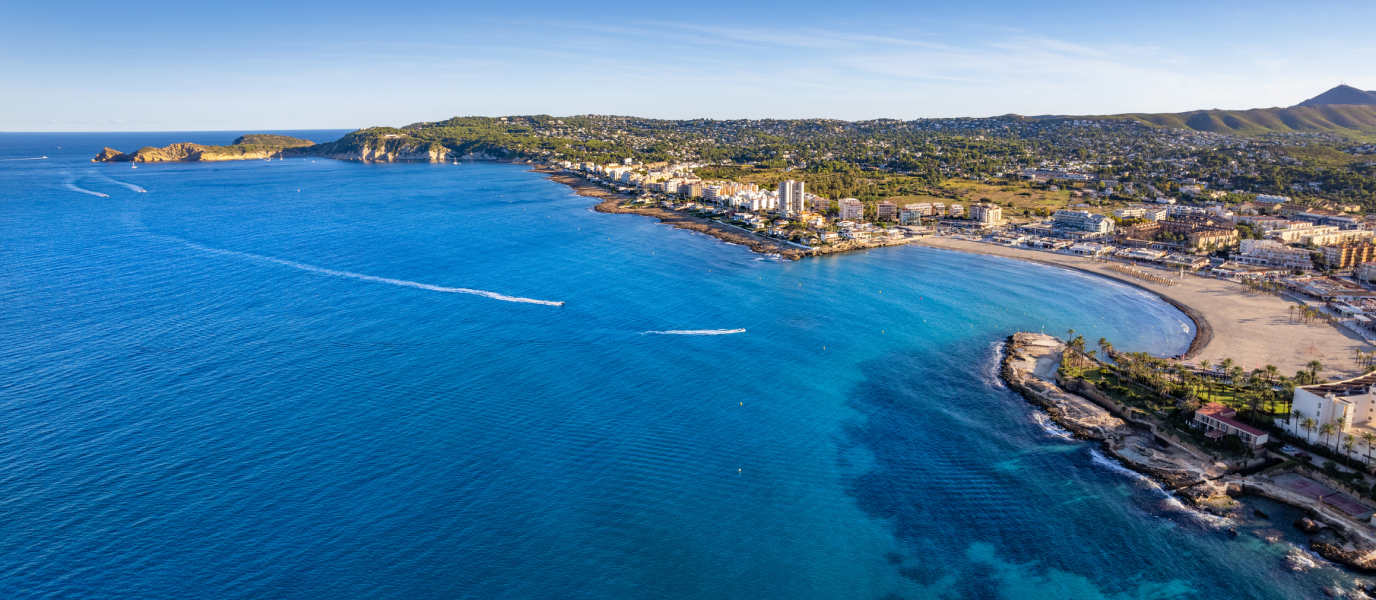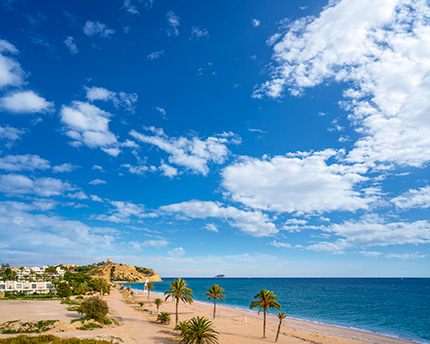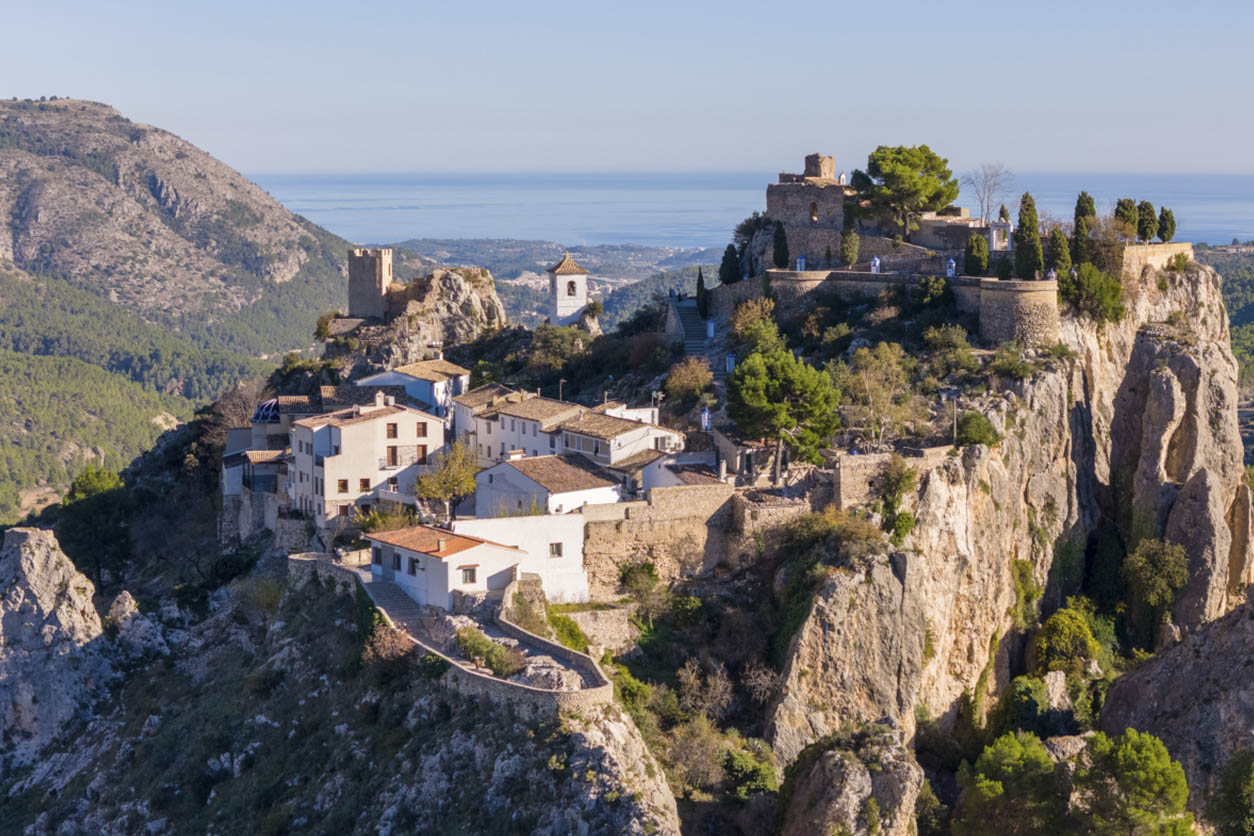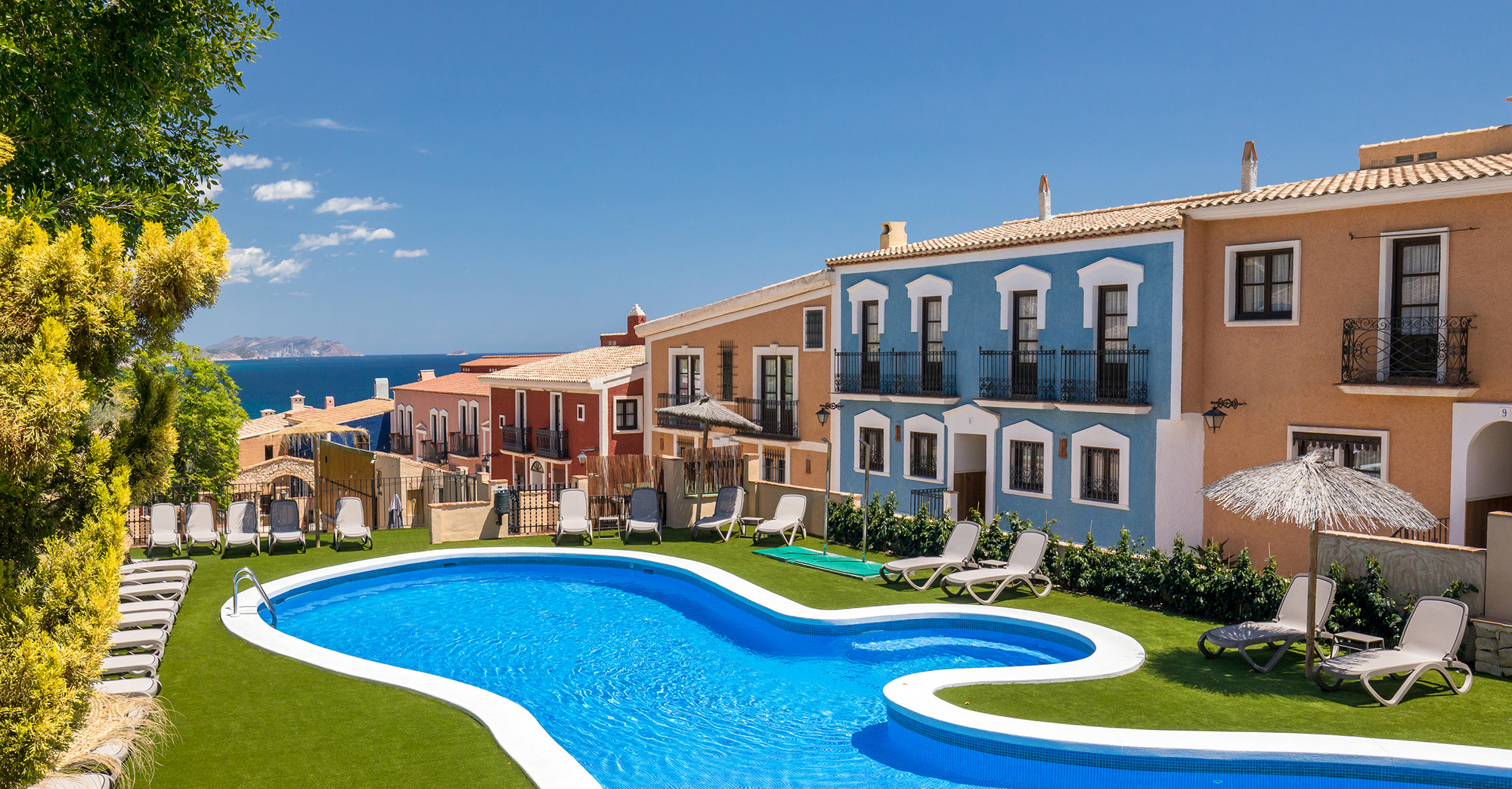Sun, beach and much, much more: Alicante province can proudly claim to have dozens of enchanting villages. Stunning tiny coastal villages with a seafaring spirit or ancient inland fiefdoms that still have their castles and watchtowers. Alicante’s charming villages have a remarkable historical and natural heritage; set some time aside to visit at least one of them to make sure you don’t miss out.
Altea
With the unmistakable blue tiled dome of the church of Nuestra Señora del Consuelo presiding over the town (it’s not for nothing that it’s called the Dome of the Mediterranean), Altea invites visitors to aimlessly wander the steep cobbled streets of its historical centre. It’s one of the most beautiful villages on the Costa Blanca, filled with magical hidden corners, street markets and shops selling handcrafted goods.
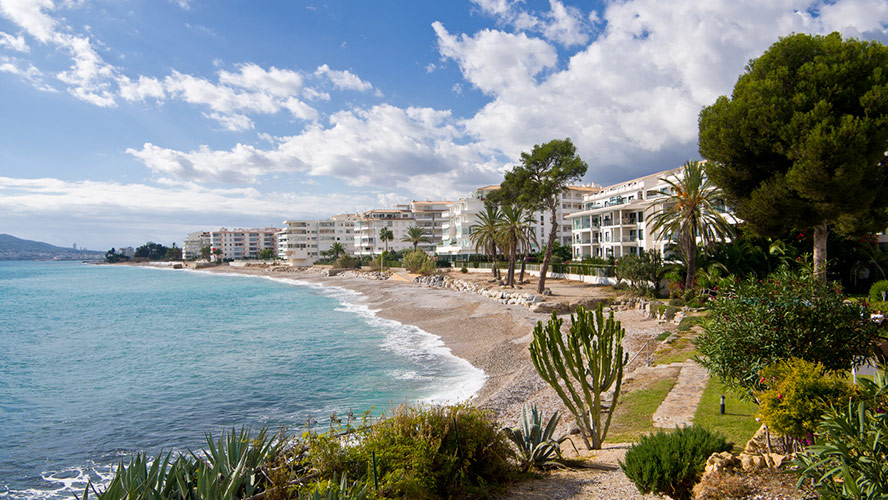
Elche
Elche is the village in our list that is closest to Alicante although, strictly speaking, it’s actually a city: it’s the second most populated municipality in the province and its charms are in proportion to its size. To mention just some of its great attractions, the city has the largest palm grove in Europe. It also has a wonderful route around its monuments that reveal a two-thousand-year history and includes the basilica of Santa María and the historical centre.
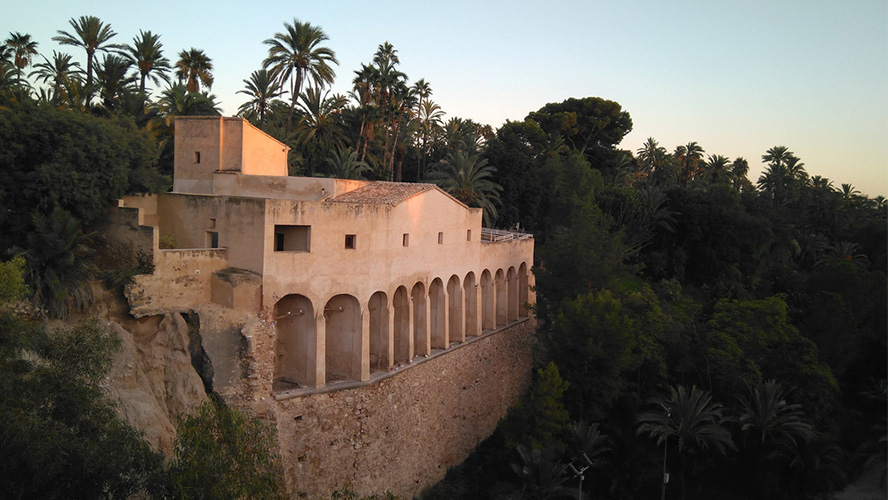
Denia
Denia has become one of the most tourist-orientated towns in the province thanks to its 20 km of fine sandy beaches, giving the town an amazing atmosphere during high season. In terms of culture, it’s definitely worth climbing up to the castle and visiting the Archaeological Museum at the top. An interesting fact is that the old train station is now home to the Toy Museum, a fascinating journey through the 20th century history of this industry in the province that will delight children and nostalgia fans alike.
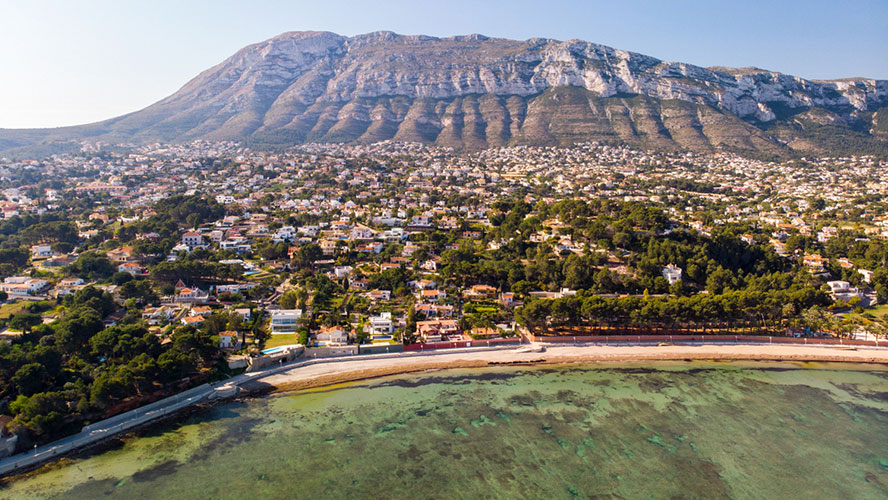
Calpe
The main attractions of Calpe are its beaches and coves, which are only beaten by the Penyal d’Ifac the unchallenged symbol of the Costa Blanca. This imposing limestone rock stands 332 metres high and has been made a natural park. It makes the perfect photo opportunity and is a wonderful place to go scuba diving and climbing, plus it also has some trails that are suitable for gentle hiking.
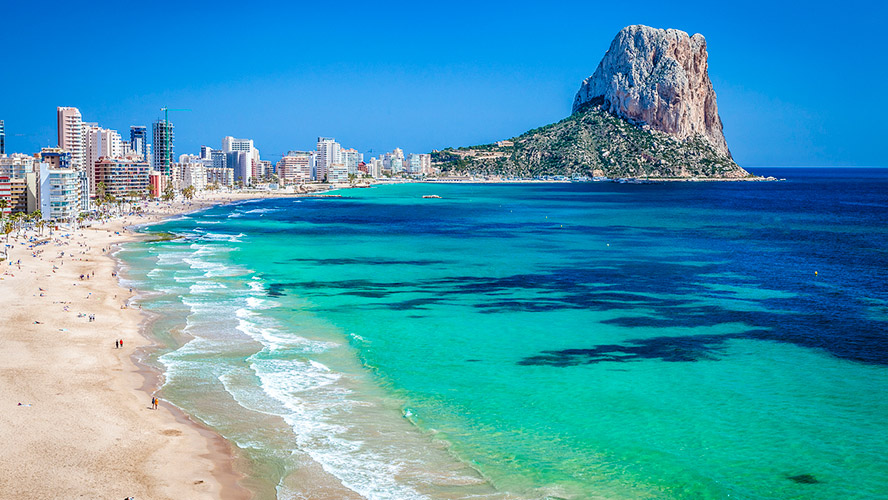
Jávea
This village has some of the clearest waters in Alicante province but don’t forget that its beaches are stony. In addition to its coves and beaches, it’s also worth wandering along the cobbled streets of the historical centre of this little fishing village and visiting adjoining Montgó Natural Park.
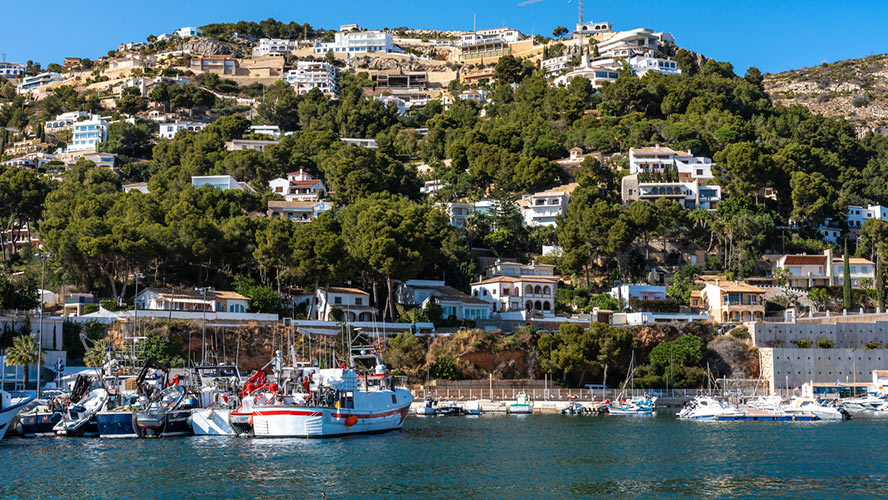
Orihuela
Capital of Vega Baja region, Orihuela stands on the shores of the Segura river and has some of the best fine sandy beaches in the region, coves with turquoise waters, two marinas and several golf courses. Its cultural heritage includes highlights such as the Colegio Diocesano Santo Domingo, an old Dominican convent that was later used as a university, and the historical centre, where you’ll find the cathedral, the Episcopal Palace and the Holy Week Museum.
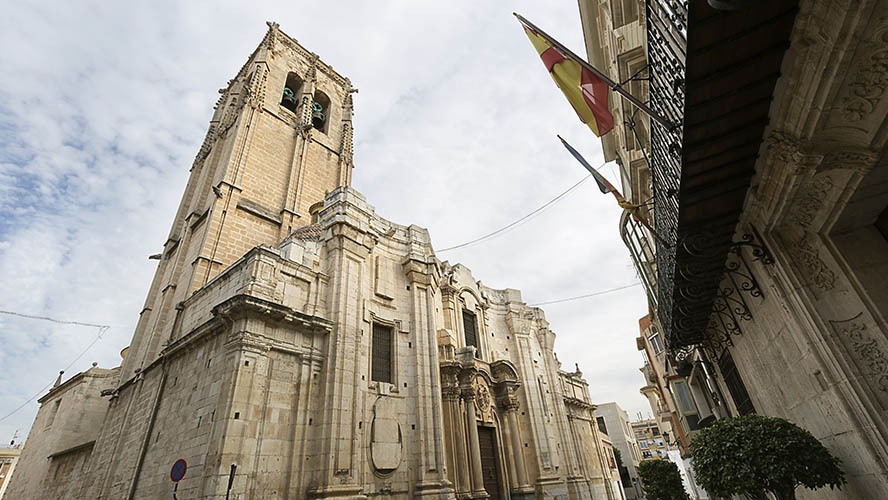
Guadalest
This little inland village is in a valley of the same name and has spectacular views, especially if you climb up to San José castle, a 11th century fortress built at the top of a crag at an altitude of 500 m. When in Guadalest make sure you visit the Casa Orduña, a building belonging to a noble family that was constructed after the 1664 earthquake, and the parish church of Nuestra Señora de la Asunción.
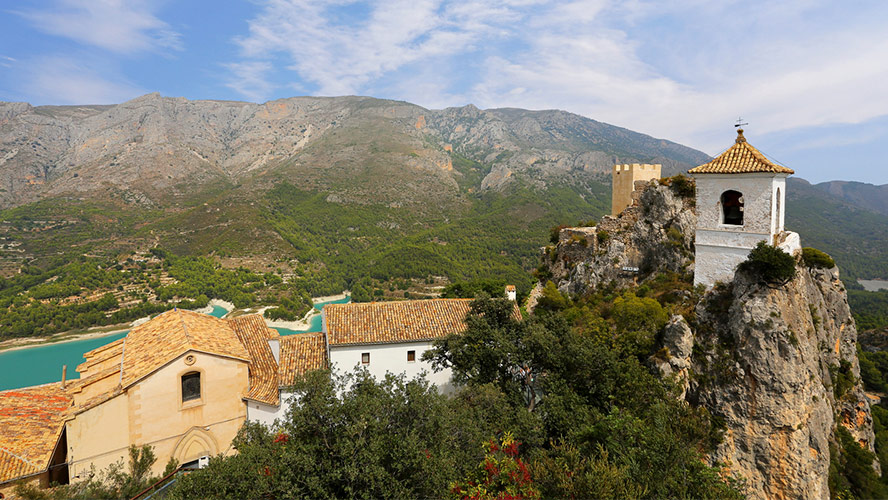
Alcoy
The capital of Hoya region is one of the villages in Alicante with the most attractions to visit, including the church of Santa María, the medieval towers, the Modernist Casa del Pavo, the Círculo Industrial and the Cervantes bomb shelter built during the Spanish Civil War.
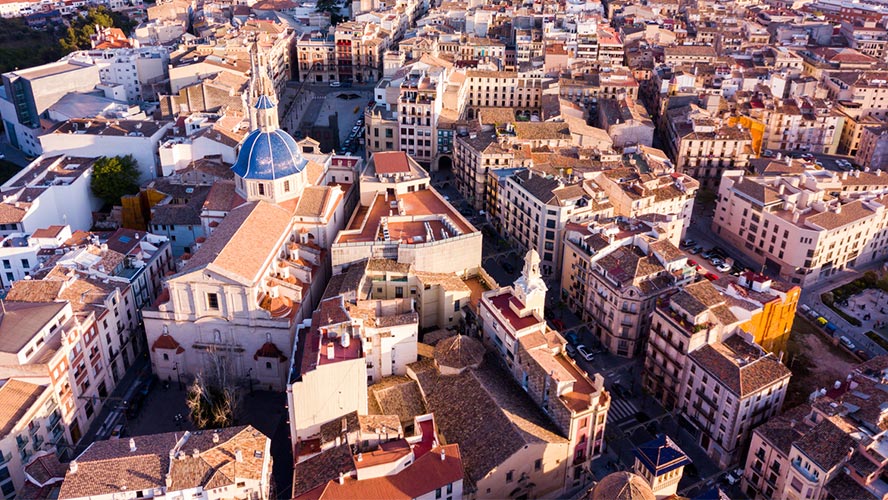
Moraira
Whoever built the castle of Moraira in the 18th century was bound to have been more interested in protecting themselves from pirates than the wonderful views. Luckily, these days travellers only have to enjoy the latter before they explore the sailors’ neighbourhood, an area steeped in the town’s fishing tradition, and potter around the historical centre.
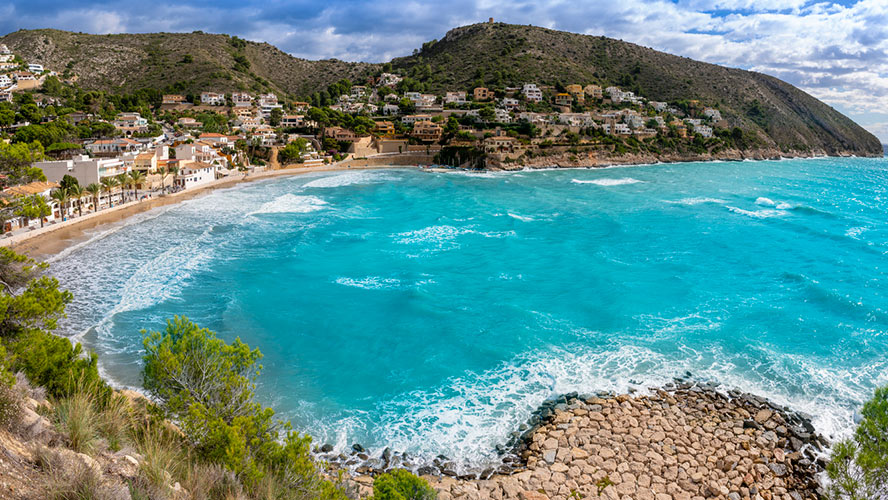
Villena
As you approach Villena you’ll instantly notice Atalaya castle, a spectacular fortress that was originally a Moorish fortification built at the end of the 11th century — it’s still in excellent condition today. In addition to the castle, Villena can boast of having none other than the most important prehistoric treasure in Europe. It consists of 66 pieces (bowls, bottles, decorations) that add up to around 10 kg of gold and are on display in the José María Soler Archaelogical Museum.
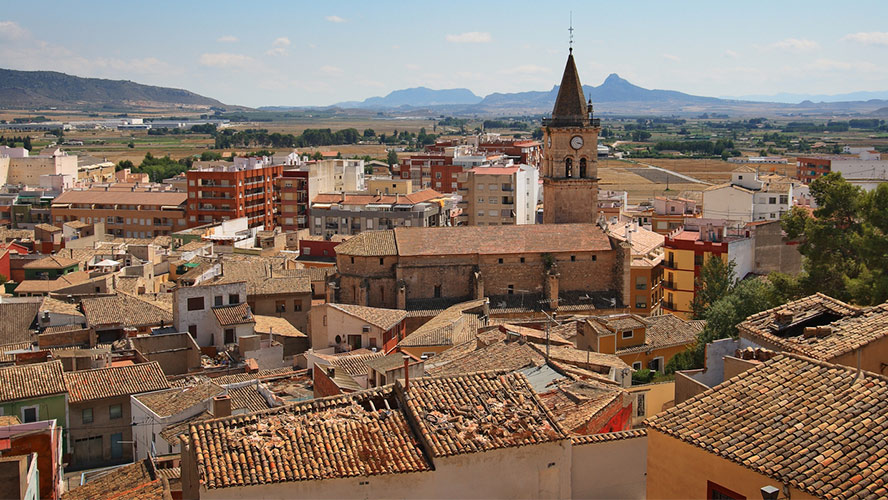
Novelda
Tourists are mainly drawn to this town in Medio Vinalopó thanks to its exceptional Modernist sanctuary that was completed in 1946 and is reminiscent of La Sagrada Familia in Barcelona. After visiting the sanctuary, don’t forget to climb up to La Mola castle; this fortification was originally Moorish and was built at an altitude of 360 m at the end of the 12th century.
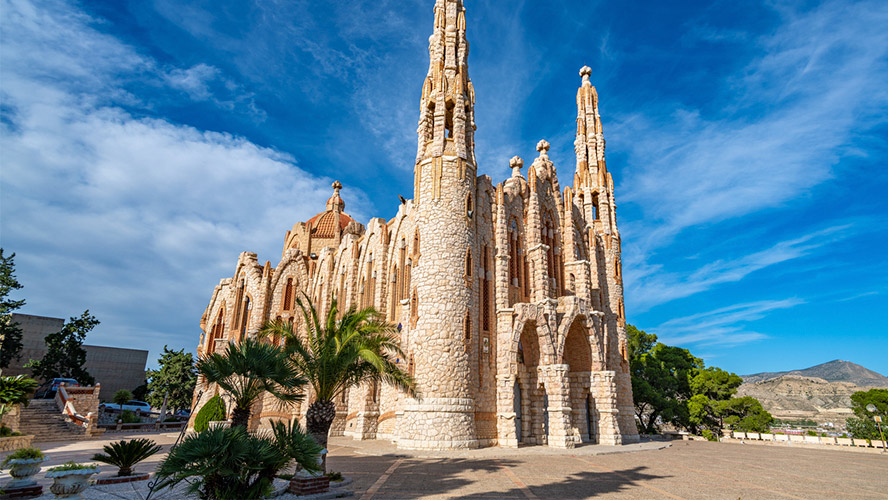
Sax
Small but enchanting inland village in Alto Vinalopó region. Its castle looks down on the village from an altitude of 500 m, and Sax also has other attractions such as the parish church and the Colony of Santa Eulalia, an old workers’ commune. And don’t forget the surrounding countryside, especially the Plano pine forests and Cabrera mountains, which have some of the best views of the valley.
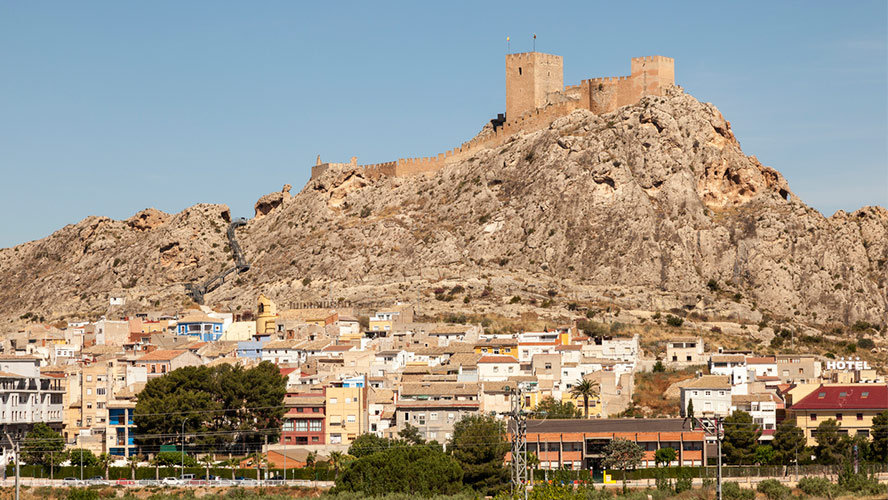
Castalla
This is another inland village in Alicante province and it has an impressive castle complex at the top of a hill, 780 m above sea level. Castalla also has other points of interest such as the Neoclassical Franciscan convent, the hermitage of La Sangre (Early Gothic) and the church of La Asunción (Catalan Gothic).
Biar
The main attraction of this town in Alto Vinalopó region is its 12th century fortress. Visitors should also take the time to discover Biar’s Neoclassical sanctuary and unusual pointed-arch aqueduct that was built to supply the area with water during the 15th century.
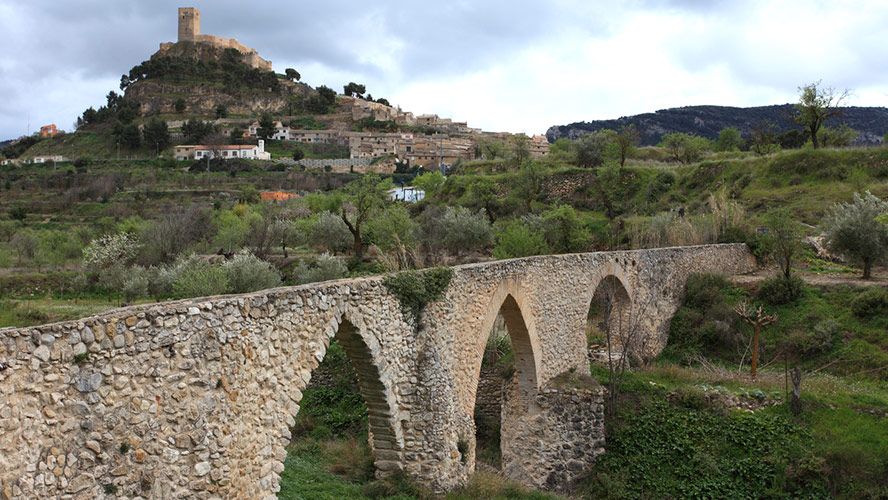
Polop de la Marina
The castle of Polop de la Marina also dates from the 12th century and is now a cemetery. It’s fascinating to observe how the village has adapted to the landscape of the Monte mountains. The best way to explore this enchanting village is to let your instinct guide you and serenely wander its streets.
